Immunosuppressant Drug Interaction Checker
How to Use This Tool
Select your primary immunosuppressant and any other medications you're taking. The tool will alert you to potential interactions and side effects specific to your regimen.
Living with a transplanted organ means a daily balancing act between keeping rejection at bay and coping with the ripple effects of the medicines that make it possible. For most recipients, that means a cocktail of immunosuppressants that must be taken for life, each with its own set of warnings, lab checks, and hidden interactions. Below you’ll find a practical, side‑effect‑focused guide that walks you through how these drugs work, what to watch for, and how to stay ahead of problems before they become emergencies.
Immunosuppressant drugs are a group of medications designed to deliberately dampen the immune system so that a transplanted organ isn’t rejected. They are the backbone of modern transplant care, but because they touch every corner of the immune response, they also intersect with many other medicines and bodily processes.
How the Main Classes Work
Understanding the mechanism helps you predict what side effects might appear and why certain other drugs cause trouble.
- Tacrolimus (Prograf) and Cyclosporine belong to the calcineurin‑inhibitor family. They block the enzyme calcineurin, stopping T‑cells from turning on the genes that produce interleukin‑2, a key driver of rejection.
- Mycophenolate mofetil (CellCept) is an antimetabolite that halts the synthesis of guanine nucleotides, a building block that rapidly dividing lymphocytes need.
- Sirolimus (Rapamune) and its cousin everolimus sit in the mTOR‑inhibitor class. They freeze the cell‑cycle at the G1 phase, curbing the growth of immune cells.
- Prednisone (a corticosteroid) exerts broad anti‑inflammatory effects by dampening multiple cytokine pathways, including IL‑1, IL‑6, and TNF‑α.
Why immunosuppressant drug interactions Matter
Calcineurin inhibitors are metabolised primarily by the liver enzyme CYP3A4 and are shuttled out of cells by the transporter P‑glycoprotein. Anything that nudges those pathways can swing drug levels up or down dramatically.
- Azole antifungals (e.g., fluconazole, itraconazole) inhibit CYP3A4 - tacrolimus levels can jump by 50‑200 %.
- Rifampin and other potent inducers crank up CYP3A4 - tacrolimus can plunge 60‑90 %.
- Macrolide antibiotics (clarithromycin, erythromycin) also raise tacrolimus, often requiring a 30‑50 % dose cut.
- St. John’s Wort is a herbal CYP3A4 inducer that can make tacrolimus ineffective.
Because the therapeutic window is narrow, any change should trigger a repeat trough level check within 2‑3 days.
Side‑Effect Profiles by Drug Class
Every class brings its own signature problems. Knowing them lets you spot red flags early.
- Calcineurin inhibitors (tacrolimus, cyclosporine): nephrotoxicity (25‑40 % develop chronic kidney injury), new‑onset diabetes after transplantation (NODAT) in 20‑30 % of tacrolimus users, tremors, and high blood pressure.
- Antimetabolites (mycophenolate mofetil, azathioprine): gastrointestinal upset (30‑50 % with MMF) and bone‑marrow suppression (leukopenia, anemia). Azathioprine leans more toward cytopenias, while MMF hits the gut harder.
- mTOR inhibitors (sirolimus, everolimus): reduced nephrotoxicity but higher rates of proteinuria, hyperlipidaemia, mouth ulcers, and delayed wound healing.
- Corticosteroids (prednisone): weight gain, osteoporosis (40‑60 % long‑term), mood swings (“steroid rage”), and Cushingoid appearance.
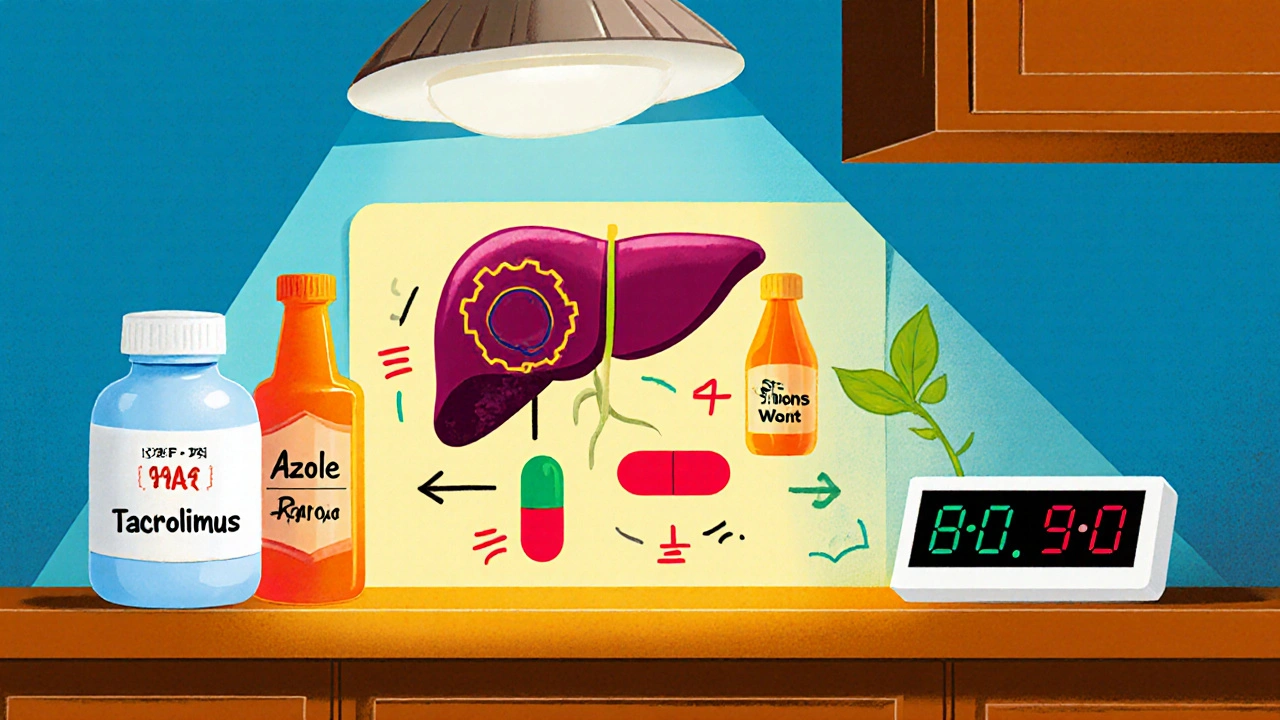
Monitoring & Managing the Risks
Therapeutic drug monitoring (TDM) is the cornerstone. Here’s a typical schedule for tacrolimus:
- Twice‑weekly troughs for the first month post‑transplant.
- Weekly troughs through month 3.
- Bi‑weekly through month 6.
- Monthly thereafter, or sooner if a new medication is added.
Lab panels should accompany TDM:
- Complete blood count every month (watch for leukopenia from antimetabolites).
- Lipid panel every three months (especially with mTOR inhibitors).
- Serum creatinine & eGFR at each visit (detect early nephrotoxicity).
- Fasting glucose or OGTT every six months (catch NODAT early).
When a drug interaction is suspected, adjust the calcineurin inhibitor dose by 25‑50 % and re‑check levels within 48 hours. For persistent high levels, consider a temporary switch to a non‑CYP3A4‑dependent agent like belatacept.
Practical Tips for Recipients
- Keep a written medication list and update it every time a new drug (prescription or OTC) is started.
- Use an electronic pill dispenser that can track missed doses - studies show adherence jumps from ~72 % to >89 % with such devices.
- Never skip meals or change the timing of tacrolimus without consulting your team; food can affect absorption.
- Report fevers >100.4 °F (38 °C) immediately - infections are the leading cause of post‑transplant hospitalizations.
- Stay within 2 hours of your transplant centre during the first year; many programmes require this for rapid emergency access.
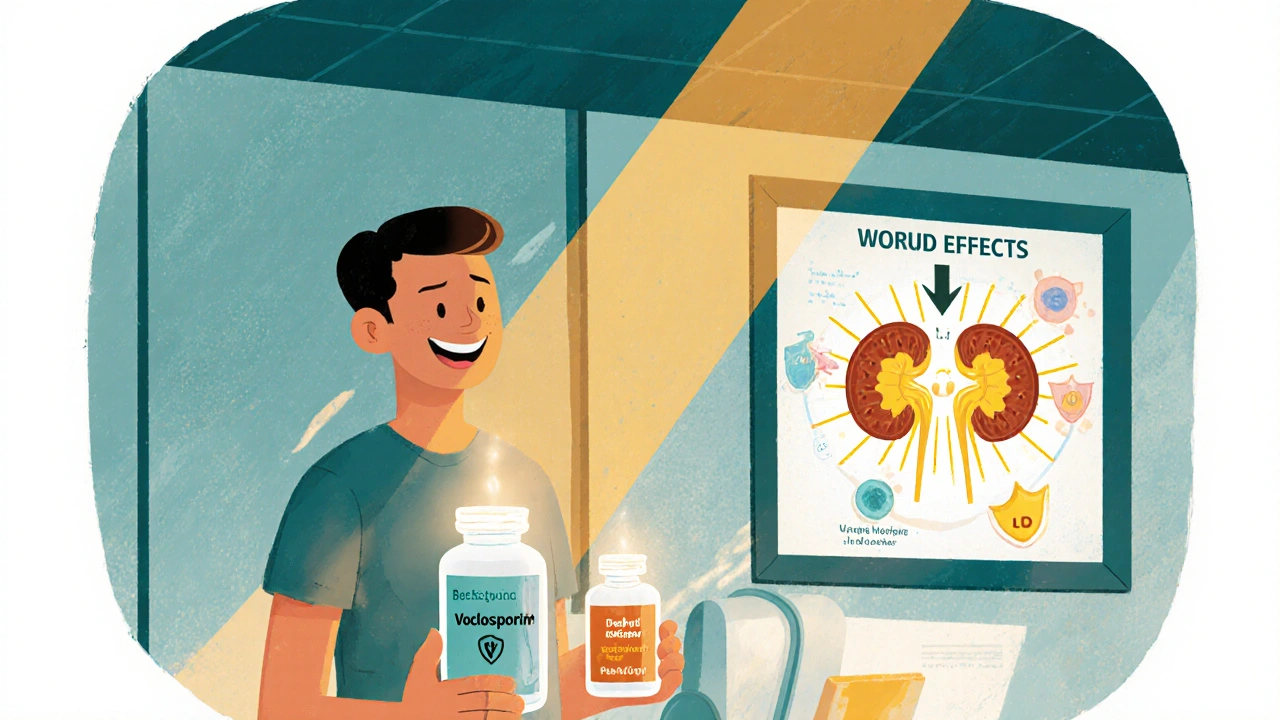
Emerging Options & Future Directions
New agents aim to keep rejection rates low while trimming side‑effects.
- Voclosporin: a next‑gen calcineurin inhibitor with steadier pharmacokinetics; trials show 24 % less nephrotoxicity than tacrolimus.
- Belatacept: a costimulation blocker that cuts cardiovascular mortality and malignancy risk but carries a modestly higher acute‑rejection rate.
- Regulatory‑T‑cell therapies (the ONE Study) are showing operational tolerance in ~15 % of kidney recipients, hinting at a future where lifelong pills may not be needed.
- Steroid‑minimisation protocols now start tapering prednisolone within 7‑14 days for low‑risk patients, reducing bone‑loss and weight‑gain complications by up to 40 %.
While these advances are promising, the core principle stays the same: close monitoring, clear communication with the transplant team, and proactive management of side effects.
Quick Comparison of Common Regimens
| Drug | Class | Typical Level Target | Top Side Effects | Notable Interactions |
|---|---|---|---|---|
| Tacrolimus | Calcineurin inhibitor | 5‑8 ng/mL (first year) | Nephrotoxicity, NODAT, tremor | Azoles ↑, Rifampin ↓, Macrolides ↑ |
| Cyclosporine | Calcineurin inhibitor | 80‑120 ng/mL | Nephrotoxicity, gingival hyperplasia | Azoles ↑, St. John’s Wort ↓ |
| Mycophenolate mofetil | Antimetabolite | Not routinely level‑checked | Diarrhea, leukopenia | Antacids ↓ absorption |
| Sirolimus | mTOR inhibitor | 5‑15 ng/mL | Proteinuria, hyperlipidaemia, wound‑healing delay | Azoles ↑, Rifampin ↓ |
| Prednisone | Corticosteroid | 5‑20 mg daily (tapered) | Osteoporosis, weight gain, mood swings | NSAIDs ↑ GI risk, CYP interactions minimal |
Mini‑FAQ
Why do I need blood tests so often after a transplant?
Frequent labs let the team catch early signs of drug toxicity (like rising creatinine from tacrolimus) or metabolic problems (such as rising glucose from steroids). Adjusting doses before damage becomes permanent improves long‑term graft survival.
Can I take over‑the‑counter meds like ibuprofen?
Ibuprofen can worsen kidney function when you’re already on a calcineurin inhibitor, and it adds GI bleed risk when you’re on steroids. Always run any OTC choice past your transplant pharmacist.
What should I do if I notice a tremor after taking tacrolimus?
A tremor often signals a level that’s too high. Contact your clinic right away; they’ll likely order a trough level and may lower your dose by 10‑20 %.
Are there diet changes that can help reduce side effects?
A low‑salt, heart‑healthy diet eases hypertension from calcineurin inhibitors. Limiting simple carbs can blunt steroid‑induced glucose spikes. Adequate calcium and vitamin D protect against steroid‑related bone loss.
How long will I stay on these medicines?
For most recipients, lifelong immunosuppression is still the standard. Ongoing trials aim to achieve tolerance, but currently we focus on the safest, most effective regimen for each individual.

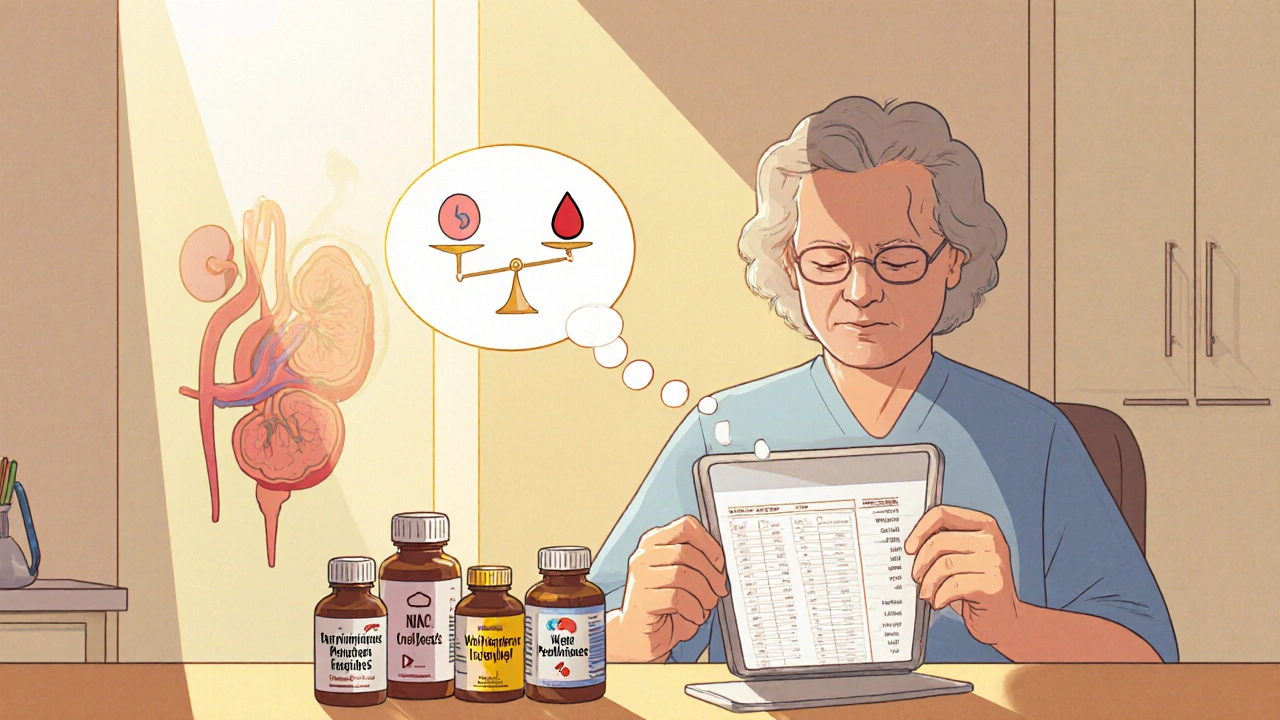
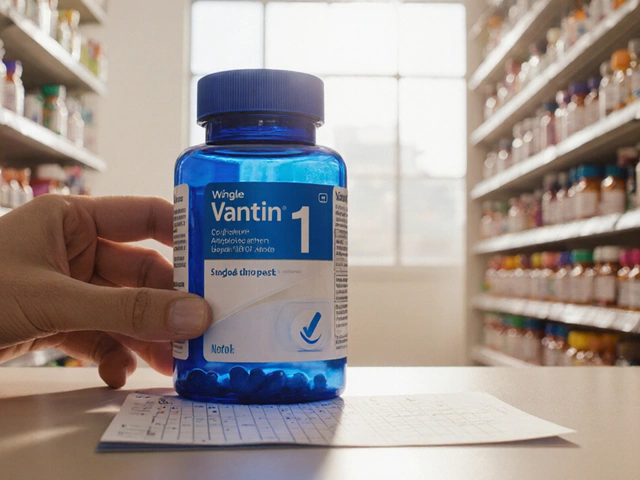

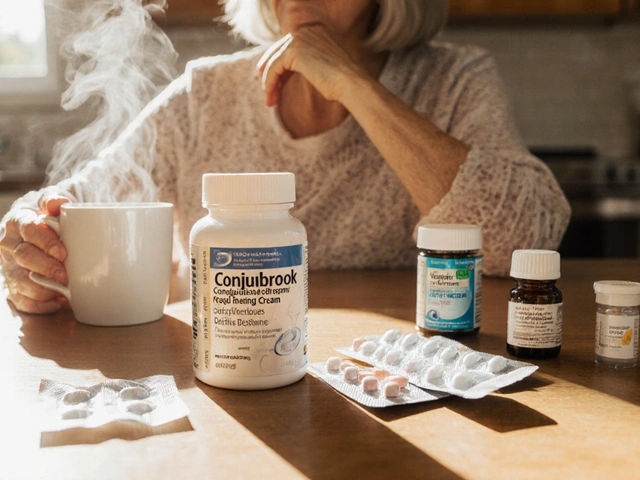
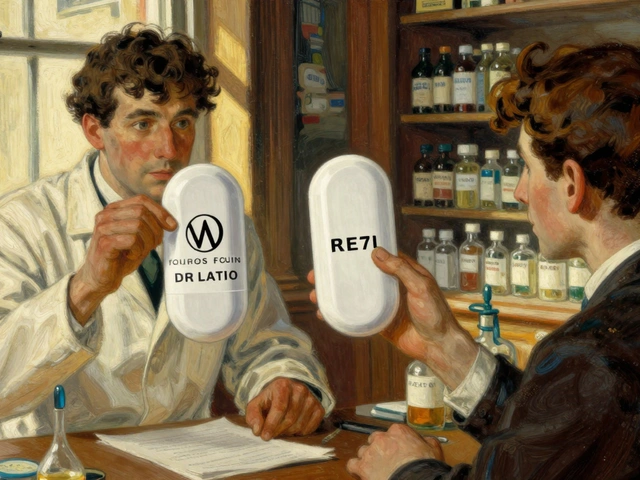
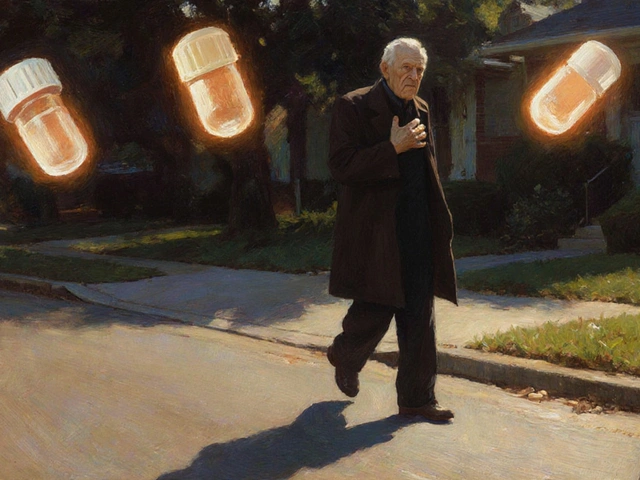
Comments(15)